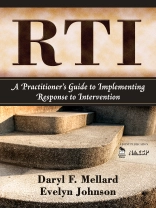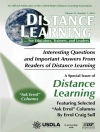‘Mellard and Johnson not only help us understand what RTI is and why we need it, they go the next step and tell us how to make it happen.’
—Joseph Jenkins, Professor of Special Education
University of Washington
‘This is a richly informative book on a most important and timely topic to hundreds of thousands of practitioners, parents, and policy makers.’
—Doug Fuchs, Nicholas Hobbs Chair in Special Education and Human Development
Vanderbilt University
The nuts-and-bolts handbook for implementing RTI schoolwide!
Written by leading special education researchers with the National Research Center on Learning Disabilities and the University of Kansas, this comprehensive yet accessible reference provides administrators with practical guidelines for launching RTI in their schools. Highlighting the powerful role that RTI can play in prevention, early intervention, and determining eligibility for special services, the authors cover the three tiers of RTI, schoolwide screening, progress monitoring, and changes in school structures and individual staff roles. The text includes:
- Site-based examples and student case studies
- A discussion of the challenges to successful implementation
- A section on frequently asked questions
RTI: A Practitioner′s Guide to Implementing Response to Intervention is an invaluable resource that helps administrators increase the likelihood of success for students at risk and meet the requirements of NCLB, Reading First, and the reauthorization of IDEA 2004.
विषयसूची
Preface
Acknowledgments
About the Authors
1. Introduction: What Is RTI?
RTI as a Three-Tiered Model
Purposes of RTI
Research Support for RTI
Summary
References
2. RTI in the Context of Policy Initiatives
Policy Coherence, Professional Learning Communities, and the Professional Teaching and Learning Cycle
Key Elements of NCLB 2001
Key Elements of Reading First
Key Provisions of IDEA 2004
Summary
References
3. Schoolwide Screening
Definitions and Features
Implementation
Changing Structures and Roles
Challenges to Implementation
Screening in Practice
Summary
Resources
References
4. Progress Monitoring
Definitions and Features
Implementation
Changing Structures and Roles
Challenges to Implementation
Progress Monitoring in Practice
Summary
Resources
References
5. Tier 1: General Education
Definitions and Features
Implementation
Changing Structures and Roles
Challenges to Implementation
Summary
Resources
References
6. Tier 2: Intervention
Definitions and Features
Implementation
Changing Structures and Roles
Challenges to Implementation
Summary
Resources
References
7. Tier 3: Special Education
Definitions and Features
Implementation
Changing Structures and Roles
Challenges to Implementation
Tiered Service Delivery in Practice
Summary
Resources
References
8. Fidelity of Implementation
Definitions and Features
Implementation
Changing Structures and Roles
Challenges to Implementation
Summary
Resources
References
9. Conclusion
Frequently Asked Questions About RTI
Conclusion
References
Index
लेखक के बारे में
Evelyn S. Johnson is an associate professor of special education at Boise State University and the coauthor of RTI: A Practitioner’s Guide to Implementing Response to Intervention. She began her career in Washington in 1994 as a special education teacher, and then at the University of Washington, Seattle, where her research focused on the inclusion of students with disabilities in accountability systems. Johnson’s work on assessment for students with disabilities has included research on accommodations and alternate assessments, as well as research on screening for reading problems. Prior to joining the faculty at BSU, she worked as a research associate for the National Research Center on Learning Disabilities (NRCLD), where she developed numerous technical assistance products to assist state and local educational agencies on RTI and learning disability identification–related issues. Currently, her research focuses on RTI implementation at the secondary levels.












